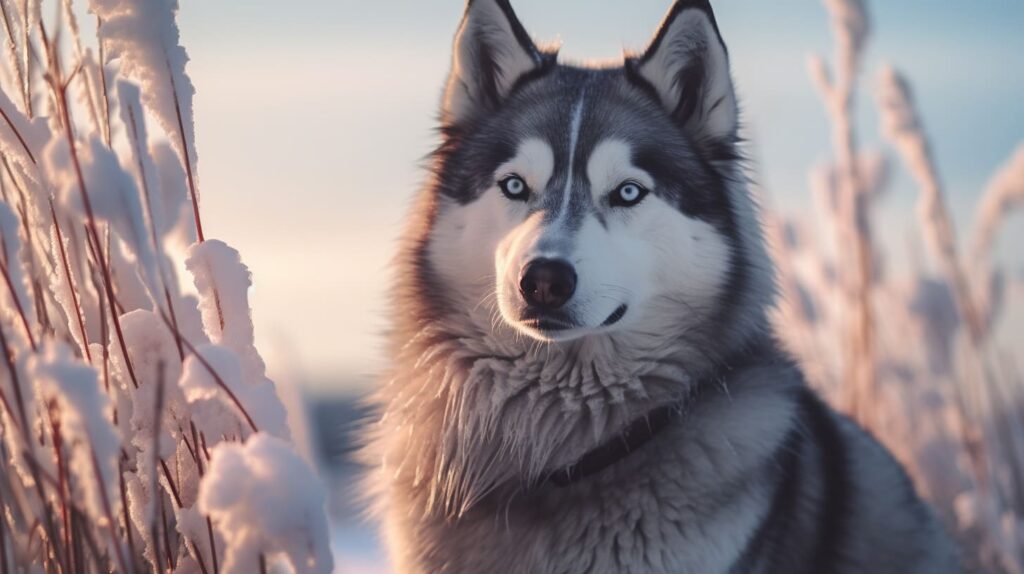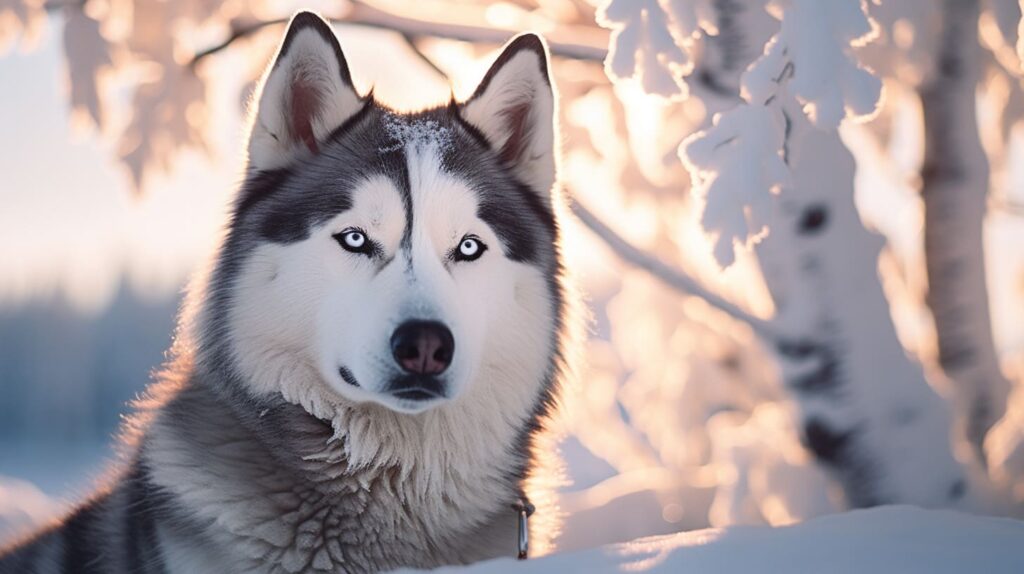Ah, the Siberian Husky, a breed known for its remarkable resilience and striking wolf-like features. Originating from the cold, harsh climates of Siberia, these fur-buddies have evolved to become one of the most cold-tolerant breeds out there. But just how cold can Huskies survive? It’s a question that niggles at the back of the mind of every potential Husky parent, especially as the winter chill sets in. By delving into the Husky’s Arctic roots and understanding their cold-weather adaptations, we can better cater to their needs and ensure they stay as snug as a bug, even when the mercury takes a nosedive. So, let’s embark on this frosty journey to uncover the icy thresholds Huskies can endure and how to keep them comfy and frolicking happily, no matter what Jack Frost throws their way!
Table of Contents
Huskies and Their Arctic Origins
In a land where the snow blankets the earth and the cold bites at every breath, emerged a breed known as the Siberian Husky. Tracing back their paw prints, Huskies were bred by the Chukchi people of Siberia for sledding and companionship. Amidst the snow-laden trees and icy rivers, these furry companions sledded across vast expanses, delivering essential goods to remote villages. Their origin is a tale of survival, companionship, and an unyielding bond with the frosty wilderness.
The Siberian wilderness was not for the faint of heart. With temperatures that could plummet to a bone-chilling -60 degrees Fahrenheit, only the hardiest could thrive. And thrive, the Huskies did! They not only survived but became synonymous with the snowy terrains of Siberia. Their legacy is a testament to their incredible endurance and adaptation to some of the most inhospitable climates known to man.
But it wasn’t just their tenacity that saw them through the blistering cold; it was a tale of evolution. Over centuries, Huskies evolved to develop traits that would see them through the harsh Siberian winters. Their story is not just a tale of survival; it’s a narrative of a breed’s remarkable adaptation to nature’s icy realm.
The Huskies’ history is interwoven with the icy breath of the Arctic, a tale that sets the stage for their incredible cold tolerance. The Huskies’ tale unfolds as we delve deeper into their anatomical wizardry, revealing secrets that arm them against the cold’s biting grasp.

Husky Cold Tolerance: A Cloak of Fur
Among the many gifts bestowed upon Huskies by Mother Nature, their dense, double coat stands out as a knight in shining armor against the cold. This isn’t just your everyday doggy fur; it’s a marvel of natural engineering designed to provide maximum warmth with minimal bulk.
The outer layer, known as the guard layer, is made of long, water-resistant hairs that fend off snow and ice. Underneath this protective shell lies a soft, thick undercoat that traps body heat, creating a warm, cozy cocoon against the harsh chill. This undercoat is so effective that Huskies are often warm enough even in temperatures that would have us humans bundled up in layers upon layers of clothing! The Huskies’ double coat is their own personal central heating system, offering a cozy retreat from the icy world outside.
But it’s not just the fur. The Husky’s compact, muscular body is a powerhouse of warmth, generating enough heat to keep them frolicking in the snow for hours on end. And let’s not forget those charming, furry tails that they curl over their faces when the cold gets a tad too nippy. It’s like having a built-in scarf ready at a moment’s notice!
And have you ever noticed the snow doesn’t melt under a husky even in the coldest of cold? That’s not magic, although it sure looks like it. It’s the evidence of how effective their fur is at insulation. The heat from their bodies just doesn’t escape!
While their fur is a knight, their metabolism is the steed that carries them through the cold. A Husky’s metabolism has a quirky ability to regulate itself to conserve energy and maintain body temperature in freezing conditions. It’s like having a built-in thermostat that knows just when to crank up the heat!
With such an ensemble of cold-weather gear naturally bestowed upon them, Huskies are well-suited to thrive in chilly environments. But, as with any knight, their armor has its limits. And understanding these limits is essential to ensuring our furry companions remain safe and comfortable, no matter the weather.
Pushing the Limits: How Cold is Too Cold for a Husky?
Huskies may have an impressive arsenal against the cold, but even the mightiest knights have their Achilles’ heel. So, how cold is too cold for your Husky? Well, the answer is not set in stone (or should we say ice). It varies based on several factors:
1. Age and Health: Just like elderly knights might struggle in harsh conditions, older Huskies or those with underlying health issues may not handle extreme cold as well as their younger, healthier counterparts. It’s important to consider your Husky’s age and overall health when venturing out in frigid weather.
2. Wind and Humidity: Imagine our knight in shining armor without a shield – that’s what your Husky might feel like in windy and humid conditions. Wind can cut through their fur, robbing them of their cozy warmth. Humidity, especially in the form of wet snow or rain, can make the cold even more biting. Keep an eye on the weather conditions and adjust your outings accordingly.
3. Activity Level: Huskies are like the adventurers of the dog world, always eager to explore. If your Husky is running, playing, or engaged in vigorous activities, they generate more body heat and can tolerate colder weather for longer periods. On the other hand, a Husky lounging around in the cold might start to feel the chill sooner.
4. Shelter and Protection: Just as knights need castles, Huskies require shelter. Providing a well-insulated dog house outside can make a significant difference in helping your Husky stay comfortable in cold weather. Additionally, equipping them with boots and jackets can provide extra protection when they brave the elements.
5. Duration of Exposure: Even the bravest knights need to rest. Prolonged exposure to extreme cold, especially for Huskies, can lead to discomfort, hypothermia, or even frostbite. Pay close attention to your Husky’s behavior. If they start shivering, seeking shelter, or showing signs of distress, it’s time to call it a day and head indoors.
So, while Huskies have an impressive cold tolerance, it’s crucial to be mindful of these factors to ensure their well-being. Think of yourself as the wise wizard guiding your furry knight through the winter wonderland. Know when to embark on grand adventures and when to retreat to the warmth of your castle.

A Warm Embrace: How to Keep Your Husky Safe in Extreme Cold Weather
Now that we’ve explored the chilly frontiers your Husky can conquer, it’s time to equip you with the knowledge and tools to be their trusty guide through winter’s icy grasp. Here’s how to keep your Husky safe in extreme cold weather conditions:
1. Insulated Shelter: Every knight needs a stronghold, and your Husky is no exception. Provide them with a well-insulated doghouse that shields them from the biting cold and icy winds. Avoid using blankets for insulation, as they can trap moisture. Instead, opt for a layer of straw or hay, which offers superior insulation.
2. Door to Shelter: Imagine your Husky’s shelter as their fortress. To keep it warm and prevent rain, snow, and wind from sneaking in, consider installing a proper door. This small addition can make a big difference in keeping your furry warrior snug.
3. Cozy Bedding: Just as knights have their feathered beds, your Husky deserves a warm and comfortable place to rest. Ensure their bedding is warm enough to keep them cozy through the coldest nights.
4. Boots and Jackets: Outfit your Husky with boots and jackets when venturing out into the cold. These protective garments help keep their paws warm and protect them from the elements, ensuring a more enjoyable winter adventure.
5. Heater for Water: Knights need sustenance, and your Husky is no different. Prevent their drinking water from freezing by placing a heater near their house. Hydration is essential, even in cold weather.
6. Extra Food: When embarking on extended quests in the cold, feed your Husky a bit more. Their bodies burn more energy to stay warm, so providing extra food helps maintain their strength and vitality.
7. Precautions for Vulnerable Huskies: Not all knights are created equal, and some may have weaknesses. Huskies with health problems, puppies, and elderly Huskies are like knights with chinks in their armor. It’s best to avoid exposing them to harsh cold, as they may not withstand it as well.
In your role as the guardian of your Husky’s well-being, these precautions are your trusty shield and sword. By following these steps, you ensure that your four-legged knight remains healthy, happy, and ready to face the challenges of winter’s realm.
The Art of Husky Fur: When Do They Get Their Full Coat?
Huskies possess a unique defense mechanism against winter’s bite – a luxurious double coat. In this section, we’ll explore the mysteries of their fur and answer the question: when do Huskies get their full fur?
Huskies have two layers of coats, namely the top coat and the undercoat. This double coating provides exceptional insulation against extreme cold, making them cold-weather warriors.
The top coat serves a dual purpose. In cold weather, it provides an additional layer of insulation to keep Huskies warm. In warmer weather, it repels water and facilitates airflow, helping them stay comfortable.
The undercoat, on the other hand, offers full insulation during extreme cold. It grows most fully as winter approaches, resulting in a thick, plush coat that keeps Huskies cozy.
Both the upper and lower coats undergo shedding throughout the year. During spring and summer, they shed heavily, especially the undercoat, which provides a lighter fur to endure the warmer seasons. In fall, shedding results in a warmer and thicker coat, ready to tackle winter’s harsh conditions.
Huskies are uniquely adapted to their environment, thanks in large part to this remarkable coat. Understanding their shedding patterns and the purpose of each layer can help you better care for your Husky in different seasons. So, embrace their fur – it’s their built-in armor against the cold!
By knowing when your Husky gets their full fur, you can better prepare them for winter’s icy grip and ensure they stay comfortable and snug throughout the year.

Pawing it All Together: The Husky Chill Factor
So, how cold can Huskies survive? These remarkable dogs have repeatedly proven that they can endure some of the harshest cold weather conditions on the planet. From their ancestral roots in the frozen tundras of Siberia to becoming beloved companions in various parts of the world, Huskies have evolved to withstand extreme cold.
Their double-coated fur, which provides insulation and regulates body temperature, plays a crucial role in helping them stay warm. However, it’s important to remember that even though Huskies are built for cold weather, they still have their limits.
As responsible Husky owners, we must ensure their safety and well-being. We should be mindful of the signs that indicate they might be feeling too cold, such as shivering or seeking warmth. Providing shelter, adequate nutrition, and attention to their health needs is essential to keeping our Huskies happy and healthy.
So, while Huskies are known for their resilience in the cold, it’s always a good idea to balance their adventurous spirit and comfort. By understanding their cold tolerance and taking the necessary precautions, we can continue to enjoy the company of these amazing dogs in various climates while ensuring their safety and well-being. After all, Huskies may thrive in the cold, but a warm, loving home is what they truly cherish.
Frequently Asked Questions About How Cold Can Huskies Survive
What temperature can Huskies tolerate?
Huskies are adapted to withstand extremely cold temperatures and can tolerate temperatures ranging from -60 degrees Fahrenheit (-51 degrees Celsius) to -75 degrees Fahrenheit (-60 degrees Celsius).
Can Huskies survive in warm climates?
While Huskies are built for cold weather, they can adapt to warmer climates with proper care. However, they are more comfortable in cold conditions.
What signs indicate that a Husky is too cold?
Signs that a Husky is too cold include shivering, having ice on its fur, anxiety, refusal to go outside, and curling up to stay warm.
How long can Huskies stay outside in the cold?
The duration a Husky can stay outside in the cold depends on various factors, including age, shelter, and overall health. It’s essential to monitor your Husky and bring them inside if they show discomfort.
Should I provide extra insulation for my Husky’s shelter in the winter?
Yes, insulating your Husky’s shelter with materials like straw or hay is advisable to keep it warm and protect it from cold and dampness.






